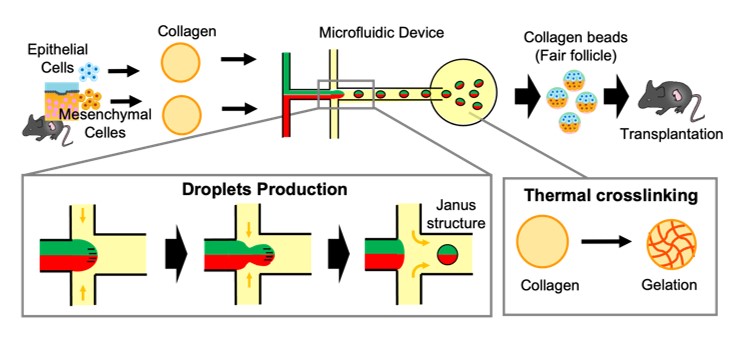The morphogenesis of hair follicle is triggered through the interactions between epithelial and
mesenchymal cells in the hair follicle germ in the development. Therefore, bioengineered hair follicle germ-like aggregates are considered to be potential tissue grafts for hair regenerative medicine. Given that a few thousands of hairs are necessary for single patients, it is important to scale up an approach to prepare a large number of tissue grafts. This study investigated mass preparation of hair follicle germ-like collagen beads using a microfluidic device. In addition, the hair regeneration ability of the beads was evaluated in vivo.
|
A sheath-flow fluidic device was fabricated to generate droplets with a Janus structure composed of epithelial and mesenchymal cell aggregates in collagen microgels. Epithelial and mesenchymal cells collected from fetal mouse skin were suspended respectively in a collagen solution and pumped to meet at the T-junction of the microfluidic channel. The droplets were formed by the addition of mineral oil downstream of the T-junction. The droplet formation rate was 325 droplets/minute, which is sufficient to produce a necessary number of tissue grafts for clinical application in 15 minutes. The droplets were heated to 37°C and gelated in about 10 minutes, then incubated in culture medium for 3 days. During 3 days of culture, the gel beads were contracted and enriched at least 10-fold in the cell and collagen density. To evaluate the hair regeneration ability of the gel beads, the gel beads were transplanted into the skin of nude mice. Black hairs were generated after 3 weeks of transplantation. In conclusion, this approach is promising for mass preparation of tissue grafts for hair regenerative medicine.

|